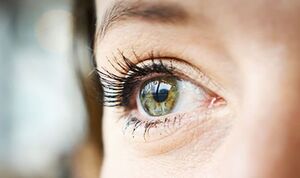Body
Therefore, today we address one of the topics that were proposed to us: When and how to detect problems in the sight of the little ones?
There are several types of vision problems, the most frequent are Myopia, Hyperopia, Astigmatism and Lazy Eye or amblyopia.
The Myopia is a refractive error or visual approach. The images are focused in front of the retina and not on it, making it difficult to see from afar. Myopia usually appears in childhood and evolves until approximately 20 years of age, when it tends to stabilize. If the refractive error is greater than about eight diopters, it is high myopia or magna myopia, a type of myopia that carries specific risks and visual complications that can be serious.
The Hyperopia is an eye defect is that light rays, rather than impact exactly on the retina, are concentrated at a point located behind the same. Its main reason is the little curvature of the cornea or due to the size of the eye somewhat smaller than the normal size. It results in the difficulty of seeing up close, with far vision being better.
The Astigmatism is a very common eye disorder characterized by an alteration in the curvature of the cornea, which causes a refractive error in the eye, which results in blurred images perceived. What is good eyesight The cornea is a transparent, spherical layer that covers the frontal area of the eyeball, and serves to protect the iris and lens. People with astigmatism have blurred vision because their cornea is abnormally curved.
The Rotteneye or amblyopic occurs when there is a decrease in visual acuity, ie does not reach 100% of vision.
From what age can they be detected?
Normally this type of eye disease is usually manifested when the children start school or save it. In this sense, it would be necessary to observe how the child behaves in his day to day or in everyday situations because they can give us the clues about a possible problem in sight.
Between the ages of 3 and 5 , children's eyes are still maturing. Before this age, it is not easy to measure visual acuity, although there are specific tests for it. From the age of 5, although the eye is not yet mature, it is time to take him to the ophthalmologist. Between 6 years and up to twelve, the eye reaches its full maturity.
If both your mother and father have eye problems or are nearsighted they are likely to inherit them since, in the case of myopia, it is hereditary. If in the family there are graduation defects in the parents, it is recommended that the child undergo a review before the age of 4.
What are the most common symptoms?
If the child has a headache when leaving school, his eyes are irritated when he does his homework or he frowns when he goes to read, it is probably due to a difficulty in vision, since the main refractive problems at school are myopia , farsightedness and astigmatism. Eye care for children also includes protecting them from the effects of UVA rays emitted by the sun.
The most frequent signs and symptoms of myopia include:
Headaches
Visual fatigue
Squint to see
Difficulty seeing distant objects, such as signs on the highway
One of the most common myths is that if the child begins to wear glasses continuously and as a child, myopia can increase, this is not true, since myopia increases at the time of development between 10 and 12 years approximately.
When would it be advisable to do the reviews?
In addition to consulting the ophthalmologist in the aforementioned situations, and although there is no apparent visual problem, routine ophthalmological reviews are recommended:
First month of life : rule out severe eye problems and birth defects.
At 6-7 months : diagnosis of strabismus.
At 18 months : refractive defects.
Every 2 years during pediatric age.












Comments